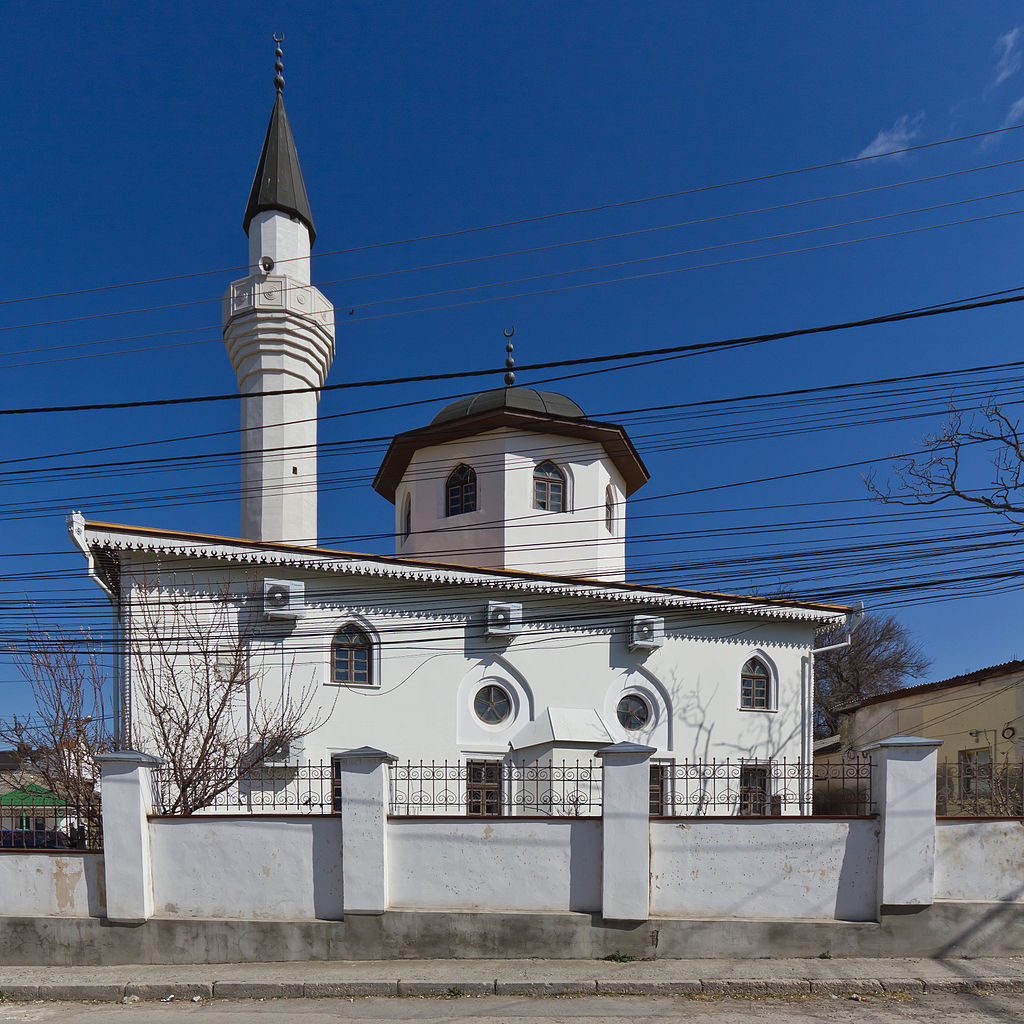8. The mosque: the sacredness of the space and the multitude of functions)
The large Friday Mosques (al-djum'a), the famous funerary mosques, the university mosques of al-Azhar in Cairo and of Qarawiyyin in Fez, the discrete mosques of the souks, or those enclosed/confined/surrounded in neighbourhoods, as prestigious edifices or modest oratories, mosques are an emblem of the Muslim religion in countries where Islam is in the majority, but also in the Muslim communities of the diaspora, in the multitude of prayer rooms or, more rarely, in the "cathedral-mosques" with minarets. From where do these religious spaces draw their sacredness? What is the place of the mosque in Muslim worship? Is there a consistent architectural design? Are there any permanent elements in the structuring of the space?
The lesson of Gabriel (Al-Tabari)
While Gabriel was here, he told the Prophet: “Ask for water, for me to teach you ablutions, that is to say how to wash your hands, and for me to teach you prayer, that is to say how you should worship Allah.” The Prophet requested some water, and Gabriel showed him how to wash his hands, and showed him how to pray.
Al-Tabarī, The History of the Prophets and Kings, chapter III, 68.
The lesson of Gabriel (ibn Ishaq)
When the first ablution was imposed to the Messenger, Gabriel came to him while he was on the heights of Mecca, and dug a hole with his heel on the side of the valley, where a fountain arose; Gabriel practiced ritual ablution for the Messenger to see him. He wanted to show him how to purify himself before prayer. Then the Messenger practiced ritual ablution the way Gabriel just did it. Gabriel then prayed with the Messenger at the same time he was praying.
Ibn Ishaq, The Life of the Prophet (edited by ibn Hisham)
The Quran articulated the obligation of prayer as an act of worship. The canonical prayer of salat, the second "pillar" of Islam, conforms to rites, which were taught to the Prophet by Gabriel. Prayer is a mandatory rite, a "service" due to God, prescribed by the Tradition and codified by law. It must be performed in a state of ritual purity.
The mihrab of the mosque of Kairouan
http://www.qantara-med.org/qantara4/public/show_video.php?vi_id=48
(19/12/2014)
The mihrab, in all its splendour in Cordoba or in a more simple or hollow form, is the main architectural innovation in the religious art of large mosques. The mihrab in the Great mosque of Kairouan is a majestic niche because of its dimensions (more than four meters high) and splendour (decorated with sculpted and latticed marble and ceramic and metallic reflections from the ninth century). Its upper part is topped by a wooden half-dome. It also has inscriptions in Kufi style, Quranic verses and blessings. The Great Mosque of Kairouan influenced the design of the mosques found in the Maghreb. It was a centre for the dissemination of malikism (see module Islam I, page 7) and an important place for the teaching of Sunni religious sciences, just as al-Azhar in Cairo.
The Kevir Jaamia mosque in Simferopol (Crimea)

Wikimedia Commons.
Licensed under the Free Art License
Image under URL:
http://commons.wikimedia.org/wiki/File:Simferopol_04-14_img14_Kebir-Jami_Mosque.jpg
The mosque can also embody a place of memory and the reconstruction of an ethnic identity, as is the case of the "White Mosque" of Simferopol, the modern name of the city founded by the Tatars in Crimea. The Tatar name of the city is Aqmescit, which means the White Mosque. The Tatars were a Sunni and Turkish-speaking minority from Crimea (12% of the population), where they founded a khanat (kingdom) in the fifteenth century. After the annexation by Russia, they became the victims of the Russification policy of the czars and the deportations that took place under Stalin in 1944 in central Asia, a collective punishment inflicted on Tatars accused of having helped the German army. In 1967 more than 125,000 returned to Crimea after the independence of Ukraine in 1991.
The oldest mosque in the Crimean capital is Kebir Jaamia (early sixteenth century). It was returned to the Tatars in 1989 and then rebuilt, but many "historic" mosques have not yet been returned. Slimane Zeghidour is a commentator for TV5 Monde and researcher at the Institute of International and Strategic Relations (IRIS).
Remarks by Slimane Zeghidour
When they come back, the Tatars are foreigners in their own land [...] They find their homes and lands occupied by Russians or Ukrainians, their mosques transformed into clubs or restaurants. To survive, they have to build small huts in the outskirts of the Crimean cities. In the middle of majority Russians (60% of the population), they are second-class citizens, still considered as "traitors”. Discrimination is every day they live, especially in employment. The Tatars are excluded from the public service, administration or police.
Interview of Slimane Zeghidour, reported in Le Point 20/05/2014. Trans. Renaud Rochette
The mosque can also embody a place of memory and the reconstruction of an ethnic identity, as is the case of the "White Mosque" of Simferopol, the modern name of the city founded by the Tatars in Crimea. The Tatar name of the city is Aqmescit, which means the White Mosque. The Tatars were a Sunni and Turkish-speaking minority from Crimea (12% of the population), where they founded a khanat (kingdom) in the fifteenth century. After the annexation by Russia, they became the victims of the Russification policy of the czars and the deportations that took place under Stalin in 1944 in central Asia, a collective punishment inflicted on Tatars accused of having helped the German army. In 1967 more than 125,000 returned to Crimea after the independence of Ukraine in 1991.
The oldest mosque in the Crimean capital is Kebir Jaamia (early sixteenth century). It was returned to the Tatars in 1989 and then rebuilt, but many "historic" mosques have not yet been returned. Slimane Zeghidour is a commentator for TV5 Monde and researcher at the Institute of International and Strategic Relations (IRIS).






